Gone undefeated: how Odessa fought
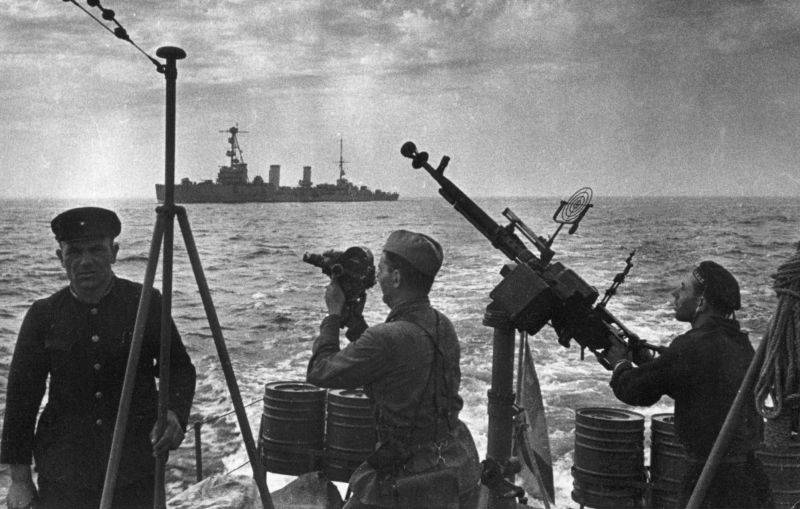
Cinematographer Mark Troyanovsky filming the departure of the ships of the Black Sea fleet from Odessa. In the background, the light cruiser Krasny Krym. October 16, 1941
New offensive of the Romanian 4th Army
Pulling up reinforcements, the Romanian army (17 divisions and 7 brigades - a total of over 270 thousand people, up to 2 guns and mortars, 200-100 tanks, 300-400 aircraft) August 20, 1941 resumed the assault on Odessa ("Do not surrender Odessa and defend to the last opportunity"; H. 2). The Romanians were actively supported by the Germans - parts of the 72nd Infantry Division, 2 assault and 4 sapper battalions, 3 battalions of heavy artillery.
The Romanian command planned to hold a parade in Odessa on August 23.
Romanian troops called for a final effort:
The head of Romania, conductor Ion Antonescu gave the capture of Odessa a special meaning, saw in this a symbol of the creation of "Greater Romania". Antonescu and the Romanian king Mihai personally arrived at the Odessa front. The king promoted Antonescu to the rank of marshal. Together they visited several units, met with the commanders. The mood was upbeat: it was expected that the army would soon take over the city.
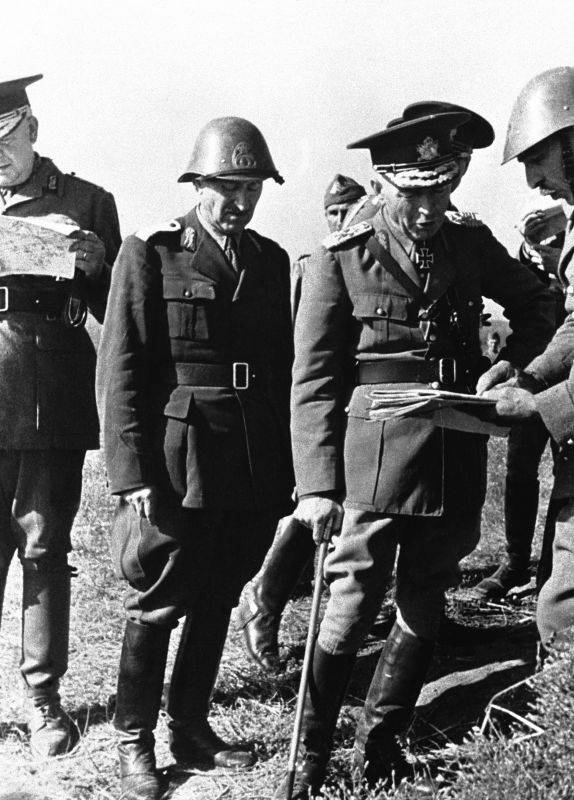
Conductor of Romania Marshal Ion Antonescu with officers at the map.
True, the Germans doubted the quick success of the Allies.
The Chief of the General Staff of the Ground Forces Franz Halder wrote in his diary about Odessa on August 20:
He also noted that Crimea cannot be taken without the Germans. Therefore, the Wehrmacht strengthened the Romanian army with its units. Germanic aviation tried to paralyze the actions of the Russian fleet, the main support of Odessa.
So, on August 29, a detachment of ships of the Black Sea Fleet led by the cruiser Chervona Ukraina (he arrived from Sevastopol and brought a battalion of volunteer sailors) suppressed enemy positions in the Eastern Sector with ship fire and helped repel the enemy offensive. The cruiser supported the Odessa garrison until September 1.
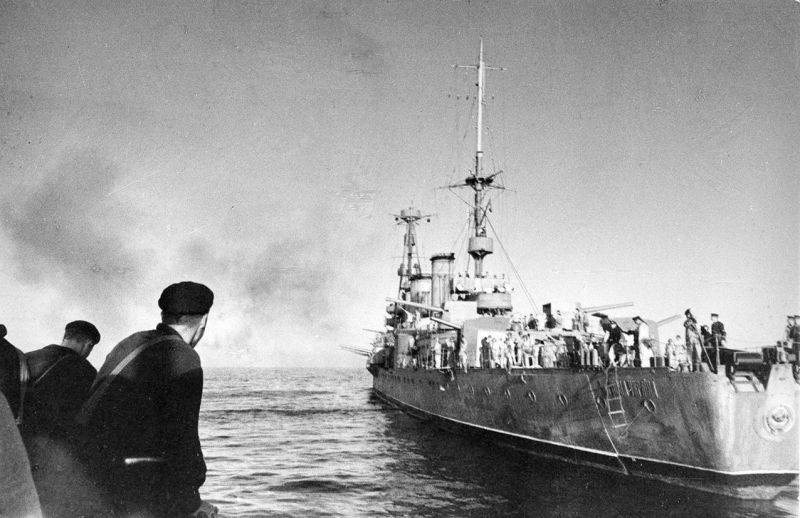
Light cruiser "Chervona Ukraine" at sea during the defense of Odessa
On August 30, the German Junkers attacked the Soviet ships. The leader of the destroyers "Tashkent" was seriously damaged. Several people were killed and injured.
The ship was sent for repairs to Sevastopol. The restoration work was carried out by 100 people who worked day and night, he was taken out of the dry dock on October 10.
On September 21, German planes sank the gunboat Krasnaya Armenia and the destroyer Frunze, which was trying to help her, near the Tendrovskaya Spit. During the raid of 9 Ju-87 dive bombers, the Soviet destroyer was hit by 5 bombs. The ship sank at a depth of 6 meters. 50 sailors were killed, but most of the crew escaped on the destroyer's superstructures and pipes, which remained above the water.
"For fright"
The garrison of Odessa lacked weapons and ammunition.
First, the fleet helped, which sent thousands of rifles, hundreds of pistols, dozens of machine guns and machine guns, a million cartridges for them, 6 thousand hand grenades, 15 thousand shells for cannons to the city.
In the city itself, they showed ingenuity and innovation.
In particular, the troops lacked armored vehicles. Then the chief engineer of the Odessa machine-building plant. In the January Uprising, P.K. Romanov proposed building substitutes for tanks on the basis of the existing STZ-5 tracked tractors, sheathing them with armor and installing light weapons. The details of the towers were made in tram workshops, the armored hulls were made at the plant named after the October Revolution, and the production of vehicles was mastered in the tank repair workshops of the plant named after. January Uprising.
Therefore, the Odessa "tank" was named "Yanvarets".
The upper part of the tractor body was cut off, and armoring was made (the armor plates were supplied by the fleet). The armor could withstand bullets and shrapnel. In the central part of the armored vehicle, a rotating turret with weapons was installed. The first two tractors were armed with 37-mm cannons from T-26 tanks, the next with machine guns (usually two 7,62-mm DT machine guns).
The first three vehicles were produced in ten days, and on August 20 they were thrown into battle in the Southern Sector. A platoon under the command of Senior Lieutenant Nikolai Yudin was at the forefront of the attack of the 25th Chapayev Division. The attack was successful, the enemy fled.
The Romanians were shocked by the appearance of Soviet tanks. Therefore, armored tractors have a new name "Fear" (NI).
The test was successful and production continued.
The command ordered the plant to produce 70 vehicles. Production was complicated by constant air raids. In total, during the defense of Odessa, more than 50 NI-1s were produced (according to other sources, more than 60). They were armed with a tank battalion under the command of Yudin.
On the night of September 20, NI carried out a massive attack (20 vehicles). Odessa tanks with headlights and sirens on moved to the Romanian positions. In addition, as veterans recalled, the armored tractors made a terrifying clang and rumble. Romanian soldiers fled in panic.
On October 2, Odessa tanks again successfully attacked the enemy near the village. Lenintal. 24 guns, mortars and machine guns were captured. During the attack, 6–7 vehicles were lost (knocked out or out of order due to a technical malfunction).
On October 15, a tank battalion covered the evacuation of the Odessa Defense Region (OOD). Some of the tanks were blown up by the crews before boarding the transport, others were abandoned. Part of the machines Romanians adopted into service with their army.
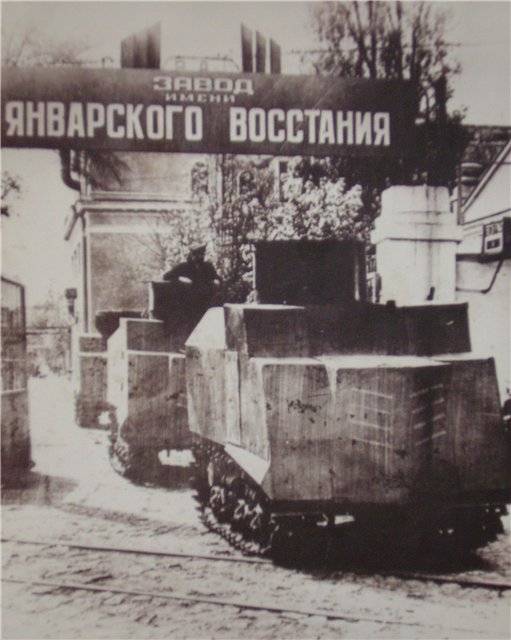
Armored tractors "NI-1" ("Fright") leave the gates of the Odessa plant. January Uprising. Reconstruction: filming of the film by R. Carmen "The Great Patriotic War" (11th episode) in the 1960s
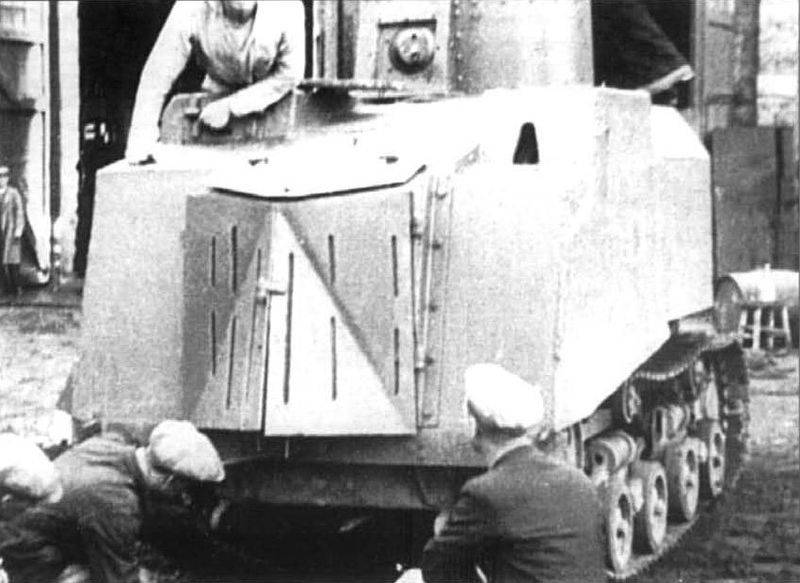
An early version of the NI-1 based on the STZ-5 tractor. August 20, 1941
"Land battleships"
Also in Odessa in August, thanks to the efforts of the workers of the January Uprising Plant and the railroad workers, depots Odessa-Tovarnaya and Odessa-Sortirovochnaya built 3 armored trains - No. 21, 22 and 23. They were armed with 45- and 76-mm (No. 21) guns, hand-held, easel and anti-aircraft machine guns.
Armored train number 22 "Chernomorets" was commissioned first, it consisted of an armored steam locomotive, two armored gondola cars, on the sides of which heavy machine guns were placed and on the edges of the platform - 4 guns on wheels (four 45-mm cannons). In the middle there was one gondola car for the team and two open platforms with sleepers and sandbags. Also, work began on two more armored trains, but they did not have time to put them into operation before the evacuation.
The armored trains were the mobile reserve of the Primorsky army, provided artillery support to the troops and made raids deep into the territory captured by the enemy.
So, the first such raid was made on August 22 by armored train number 22 "Fortress on Wheels".
On this day, a difficult situation developed on the left wing, where the 95th Division held the defensive. Our positions were attacked by the regiments of 4 Romanian divisions. From the Vygoda station captured the day before, the enemy tried to break through further to the southeast. Armored train number 22, commanded by Commissar Vyshinsky and Commander Lieutenant Belyakov, proceeded without much hindrance along the Dachnaya station and crossed the front line.
The Romanians did not think of dismantling the railroad tracks and paid for it. Vyshinsky recalled that on a parallel road, they noticed several thousand soldiers (a divine service or an oath took place). They landed a landing party, which took up a perimeter defense, and covered the enemy with machine-gun and artillery fire. The effect was overwhelming, the Romanians suffered heavy losses. Then the armored train, which the enemy artillery and aviation had already tried to cover, returned safely.
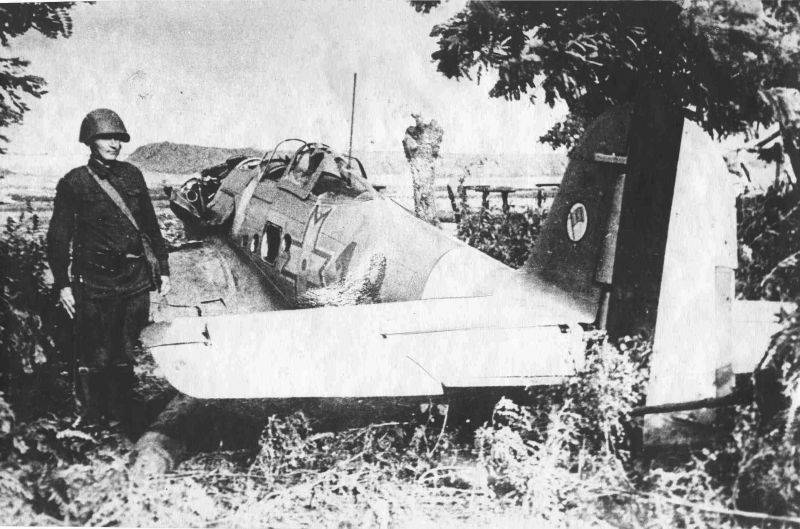
Romanian fighter of German production He-112В-2, shot down by Soviet troops over Odessa
On August 23, the same raid was made by armored train No. 21 "Chernomorets" (2 45-mm and 2 76-mm guns, 12 heavy machine guns) under the command of Lieutenant Kirpin.
The team of the armored train received an important task: at the Karpovo station, after the Red Army retreated from there, an echelon with damaged tanks remained, it was planned to overtake it to Odessa. The attack was supported by a tank platoon of political instructor Ivan Krivuli. An armored train approached the station and opened fire, the tanks went into the rear of the Romanian troops. The roar of Soviet tanks completely paralyzed the will of the Romanian soldiers, they laid down their arms. The prisoners were 4 times more than the crew of the armored train.
The repairmen restored about 100 meters of destroyed tracks, the echelon with tanks was attached to the armored train and moved back. With. The gains stalled as enemy aircraft damaged the tracks. The armored train was taken in the direction of the forest plantation, camouflaged. The track was repaired and, under the cover of their fighters, they successfully returned to the Odessa region. Some of the damaged tanks were repaired and put into operation.
Armored train "For the Motherland!" (apparently, armored train number 23) under the command of Lieutenant MR Chechelnitsky took part in the battles on the near approaches to Odessa. He covered the area from the 1st outpost to Sukhoi Liman and Tatarka (South Sector of Defense), and supported the 2nd Cavalry Division.
Armored trains took part in almost all major battles, supporting our infantry with fire, holding back the enemy's pressure. They were a serious problem for the Romanians. "Land battleships" came under shelling and airstrikes, and suffered losses. In October, armored trains covered the retreat and evacuation of the main forces. Having shot the ammunition and removed some of the weapons, the teams destroyed the armored trains and left.
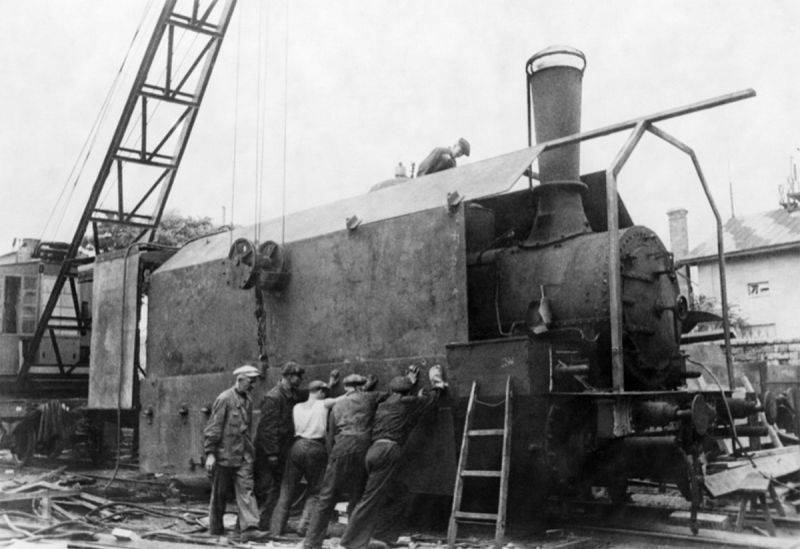
Construction of an armored train at the January Uprising Plant in Odessa. Workers armoring an Ov series steam locomotive
More than 1 200- and 50-mm mortars were produced in the city.
After the enemy used flamethrowers, they began to make their own in Odessa. More than 1 trench flamethrowers were produced. They were installed in trenches at a distance of 000–100 meters. This made it possible to create a wide fire belt at a critical moment. Some of the flamethrowers were also installed on the barricades.
The chemical artel "Komsomolskaya Pravda", which made shoe polish before the war, began to produce fuses for "Molotov cocktails" (Molotov cocktails). Explosives were produced at the Bolshevik plant (before the war, the production of plastic products).
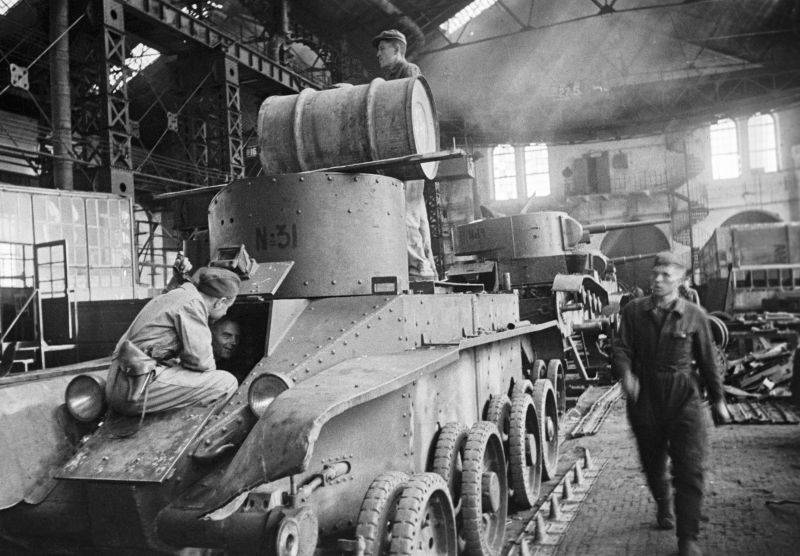
A brigade of the Zaitsev brothers repairs BT tanks going to the front at the January Uprising Plant in Odessa. In the foreground is the BT-2; in the far is the T-26
Deterioration of the situation
Day after day, our troops fought off one attack after another. The Romanians had to postpone the victory and again go to the assault.
But Odessa did not give up.
The psychological atmosphere in the Romanian troops, who hoped for an easy walk and were not ready for protracted and bloody battles, deteriorated sharply. Antonescu ordered the shooting of cowards and deserters, and the families of soldiers who refused to attack or retreating to be deprived of benefits and land allotments. Officers who show gentleness to the soldiers were ordered to be removed from their posts, brought to justice and deprived of their pensions.
The Romanian marshal was angry:
At the end of August, the Romanian-German troops again launched a large-scale offensive.
The situation was critical. Our troops have been holding back the enemy's onslaught for a month.
The seaside army was bled, local human reserves were depleted. The situation was especially difficult in the Eastern Sector, where the 412th Coastal Battery was the mainstay of the defense, armed with three 180-mm guns, seven 45-mm guns, three anti-aircraft guns and several 82-mm mortars. The battery was a real headache for the enemy, but the moment came when it was under the threat of capture. Its capture meant that the enemy would be able to bombard the city with large-caliber guns. I had to make a difficult decision: the battery was blown up.
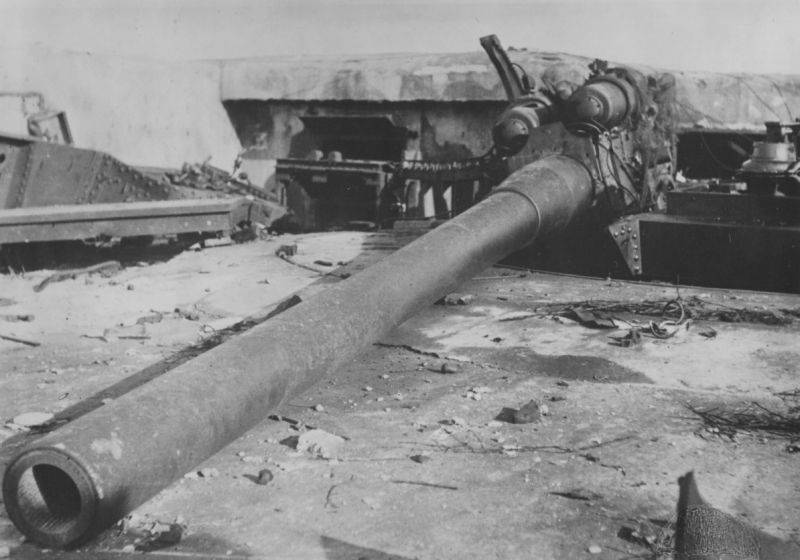
Destroyed 180-mm gun of the 412th stationary battery of the Odessa naval base. On August 25, 1941, at 9 o'clock, by order of the commander of the OVMB G.V. Zhukov, the battery was blown up in order to prevent the enemy from being captured
From the beginning of September 1941, the 4th Romanian Army was looking for weak points in the defense of the Red Army.
The fighting went on day and night. The front line gradually narrowed and passed already 8-15 km from the city. Aviation dropped incendiary bombs on the city. Romanian artillery hit Odessa.
For a while, the situation was saved by the arrived reinforcements (marching battalions): from August 30 to September 12, more than 25 thousand people were transferred to Odessa. They also brought weapons: 100 battalion and 20 regimental mortars, more than 5 thousand units of small arms. The 412th Infantry Division is being formed. On September 19, the ships of the Black Sea Fleet delivered the 157th Infantry Division of Colonel DI Tomilov (more than 12 thousand people), a division of rocket launchers and the 422nd Heavy Howitzer Regiment. The number of the garrison in Odessa increased to 85 thousand people.
The arrival of the fresh division and artillery happened quite in time. Many guns of the 25th and 95th divisions had already been knocked out, and the 2nd cavalry and 412th divisions had no guns.
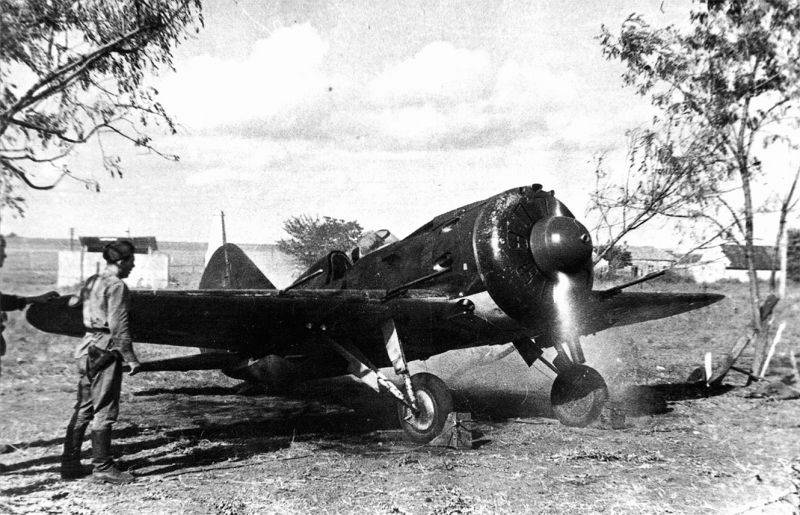
Soviet fighter I-16 at the start before taking off on a mission in the Odessa region
Counterstrike in the area of Grigorievka
Romanian artillery from the Grigorievka area hit the city and port.
The OER leadership has repeatedly asked the high command to send fresh forces so that an offensive operation can be launched and the enemy is driven back. Also, the Primorsky Army needed a reserve to parry the enemy's breakthrough. But the situation was difficult not only in Odessa, so the Headquarters advised to fight the battle on its own.
In the meantime, the situation deteriorated further.
Our troops retreated in the area of the Sukhoi and Big Ajalyk estuary. Now the enemy could shell the city from the southwest. In order to deprive the enemy of an excellent reference point for the shelling of the Odessa port, on September 15, the Vorontsovsky lighthouse had to be blown up.
The arrival of reinforcements allowed the OER command to conduct an offensive operation on the right wing on 22 September.
Before the start of the offensive, our aircraft struck at enemy airfields. From the front, in the Fontanka, Gildendorf sector, the enemy was attacked by units of the 157th and 412th divisions. In the area of Grigoryevka, an airborne assault under the command of Sergeant Major Kuznetsov (23 people) was thrown into the rear of the enemy, and a sea landing - the 3rd Black Sea Marine Regiment (1929 people) under the command of Captain K.M. Koren, landed. The landing force was delivered to the landing site by ships of the Black Sea Fleet. The landing was supported by fire from the cruisers Krasny Kavkaz and Krasny Krym, the destroyers Impeccable, Merciless and Boikiy, armored trains and artillery of the OOR. The marines with a swift attack captured the enemy positions, including the battery in Grigorievka.
The operation was successful: our troops defeated two Romanian divisions (13th and 15th), liberated several settlements, drove the enemy 5-8 km away from the city, captured trophies (6 armored vehicles, 38 guns, 30 mortars, more than 220 machine guns etc.). The enemy could no longer shell the city from the east.
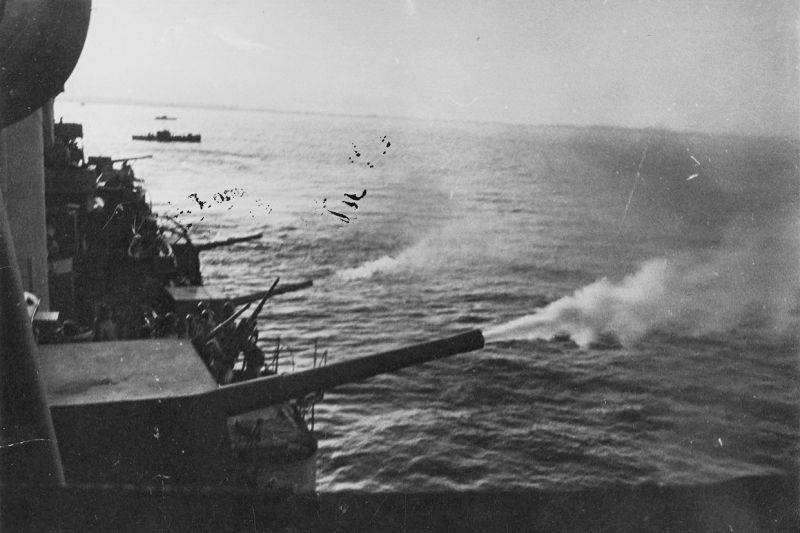
The minelayer "Comintern" fires at the enemy during the defense of Odessa
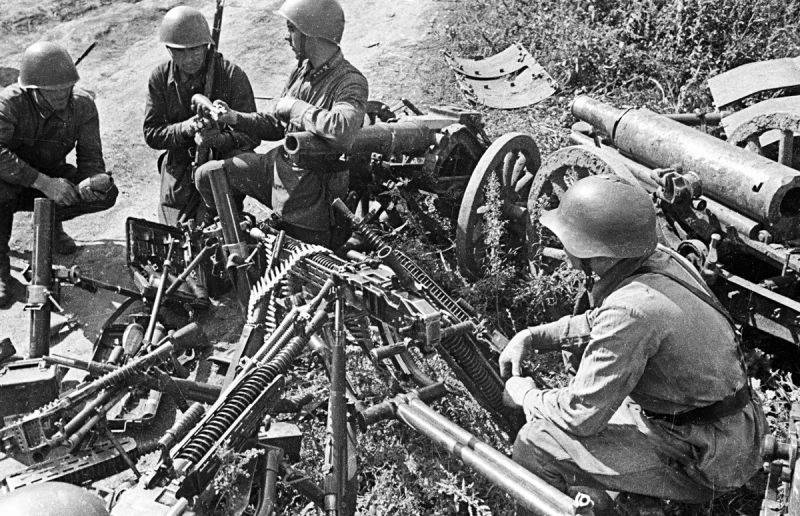
Red Army soldiers with Romanian ZB 53 machine guns, mortars and cannons captured near Odessa. September 1941
Evacuation
On September 28 and October 2, our troops attacked successfully again. On the whole, the situation at the front has stabilized. The OER command was already preparing to continue the defense in the winter. And the Romanian command faced the prospect of a long siege.
However, on September 30, 1941, due to the deteriorating situation in the southern strategic direction, the Soviet Headquarters decided to evacuate the Primorsky Army to strengthen the defense of Crimea (Battle for Crimea. How the Germans broke through to Sevastopol).
Evacuation under constant enemy pressure was a difficult task. It was necessary to remove units from the front line and prevent the Romanians from breaking into Odessa.
The OER command has successfully accomplished this task.
They decided to withdraw the main forces suddenly and load them onto transports on the 15th. The retreat was covered by a tank battalion, armored trains and partisans. They chained the enemy, who learned about the abandonment of Odessa, with active defense. Also, coastal batteries and anti-aircraft gunners covered the retreat to the last shell. Soviet soldiers blew up the guns and left on fishing boats. The last volleys at the enemy were fired by the cruiser Krasny Kavkaz, which stood on the outer roadstead and took over the rearguards.
From October 1 to October 16, 86 thousand soldiers, 15 thousand civilians, 19 armored vehicles, more than 460 guns, etc. were taken out of Odessa. Early in the morning of October 16, the last ship departed from the pier and headed for Sevastopol. Romanian troops, fearing an ambush, entered Odessa only in the evening.
The 73-day defense of Odessa tied up 18 enemy divisions (300 men), delaying the advance of Army Group South. German-Romanian troops lost up to 160 thousand people during the battle for Odessa. Our losses are more than 41 thousand people. 4th Romanian army had to be withdrawn to Romania for replenishment and restoration
The evacuation of the OER was one of the most successful evacuations of the Second World War. And the troops of the Primorsky Army, who arrived in Crimea, played a decisive role in the heroic defense of Sevastopol.
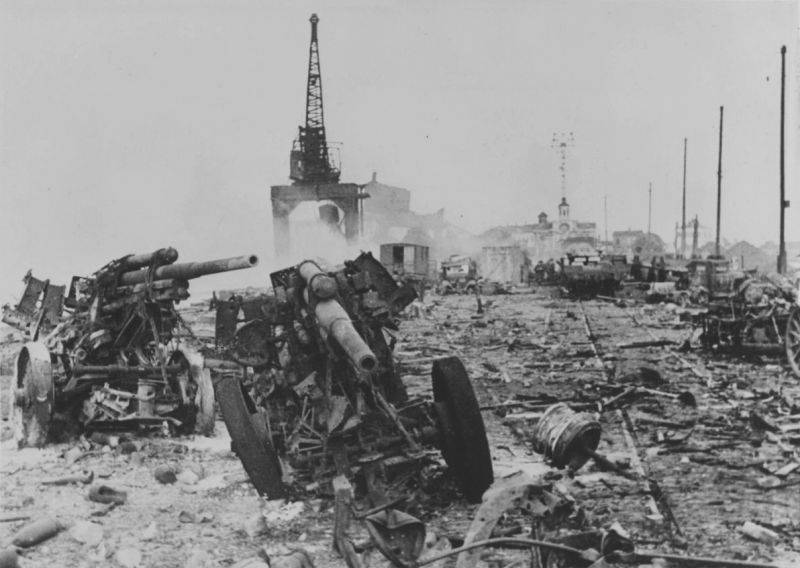
Two wrecked Soviet 76-mm anti-aircraft guns 3-K in the port of Odessa
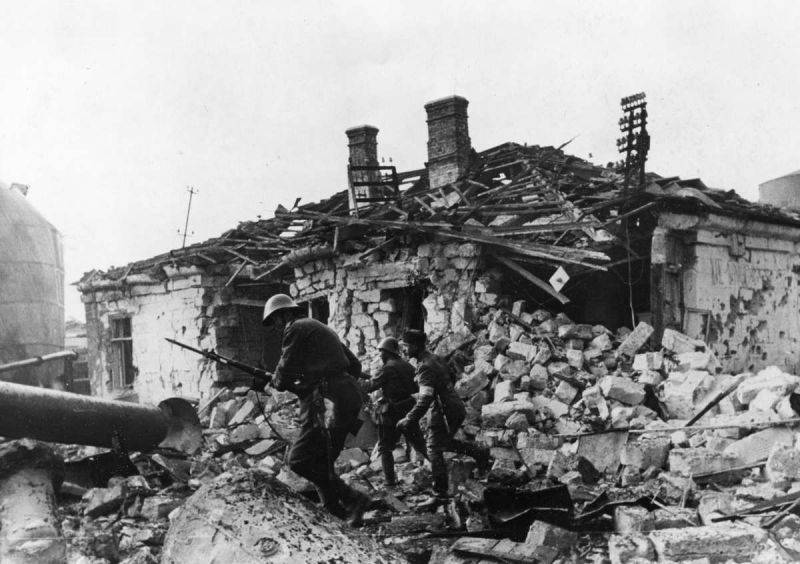
Romanian soldiers move outside a destroyed house in Odessa. October 1941
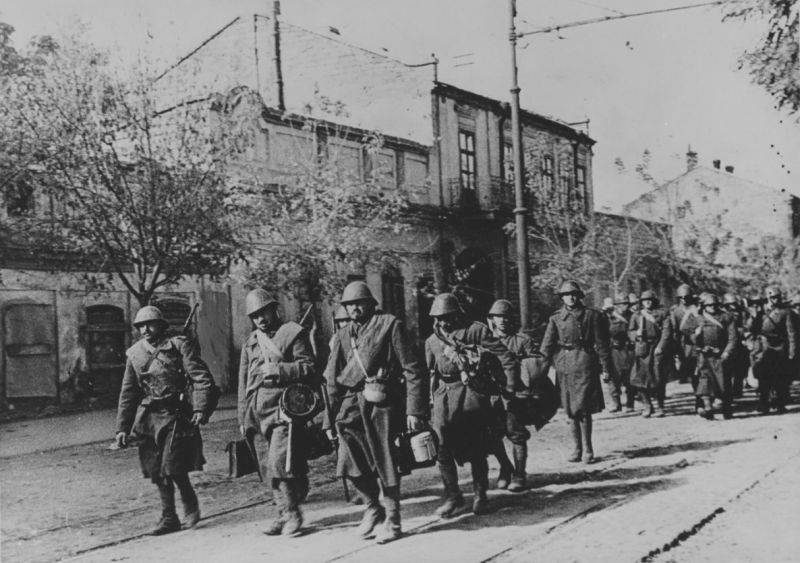
Column of Romanian infantry on the street of captured Odessa
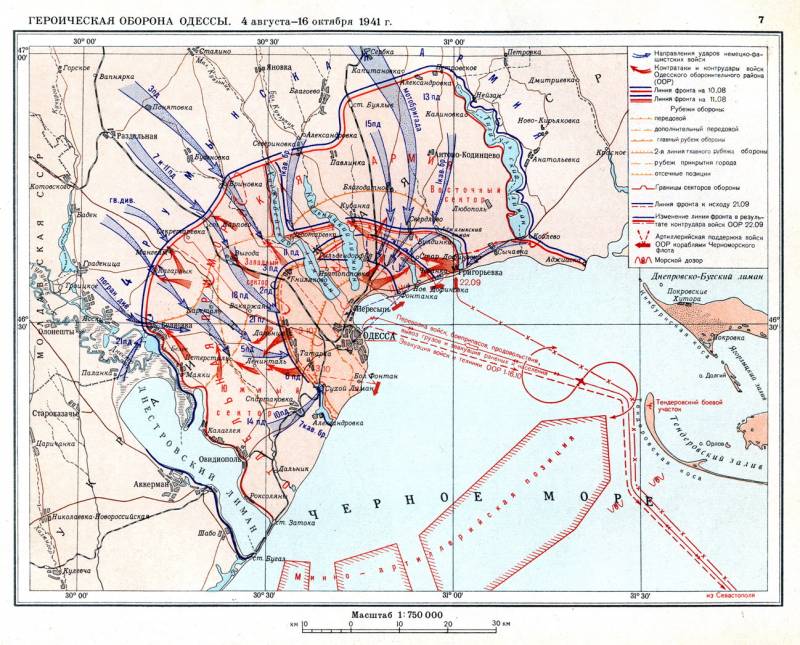
Information